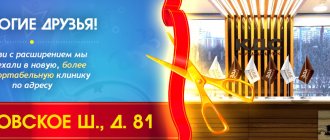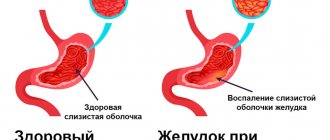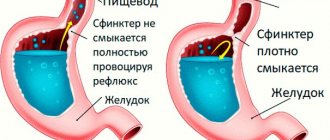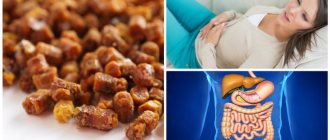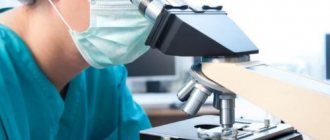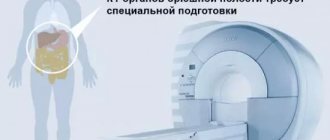The procedure has a number of contraindications. Contact only specialized specialists after prior consultation.
Approximately half of the adult population of the planet is familiar with the problem of disorders of the digestive system. Disturbances can occur systematically against the background of diseases of the gastrointestinal tract and endocrine system or occur periodically, for example, when a diet is violated.
Disorders appear in the form of diarrhea and constipation. In some cases, such as irritable bowel syndrome, the disorders alternate. There are two types of constipation - atonic and spastic. In the first case, there is no bowel movement for a long time, for 3 days. Feces accumulate and bowel movements are difficult. The consistency of the stool is uneven: at first the feces are dense, then more plastic, and then semi-liquid. This form of constipation is characterized by a high risk of developing hemorrhoids and anal fissures. Spastic constipation is accompanied by the appearance of bean-shaped feces: due to intestinal spasm, food mass moves with difficulty.
An important condition for the prevention of gastrointestinal dysfunction is to identify the causes. Spastic constipation is often associated with neurological disorders. Common risk factors for constipation and diarrhea include irregular, unhealthy diet, endocrine diseases, inflammatory processes of the digestive system, etc. It is necessary to consult a doctor to find out the causes and receive comprehensive treatment.
Massage for diseases of the digestive system
Massage for constipation is one of the ways to correct the function of the gastrointestinal tract. It can be recommended by a doctor for chronic diseases of the digestive system: gastritis, peptic ulcers (not exacerbations), colitis, impaired motility of the large intestine, etc. Both constipation and diarrhea are fraught with serious consequences. Therefore, it is important to promptly adjust bowel function to prevent complications.
Massage has one important advantage - this method in many cases goes well with physical therapy, physiotherapeutic and medicinal methods. Massage does not impose restrictions on the patient’s lifestyle, but at the same time it helps to quickly cope with the main problems with dysfunction of the digestive system: pain, cramps, constipation, diarrhea, flatulence.
Types of therapeutic massage
The variety of types of massage is impressive: many patients resort to unconventional methods of treating diseases of the digestive tract. But it should be remembered that only those methods that are recommended by the attending physician have proven effectiveness. Such types of exposure are predictable, effective, and safe with careful study of the medical history and the exclusion of contraindications.
There are several types of therapeutic massage that a specialist can recommend for gastrointestinal dysfunction.
Classic therapeutic massage
The use of massage for functional disorders and diseases of the digestive system helps improve the body's defense mechanisms. It can only be performed by a specialist with a medical education who has a good knowledge of the clinical picture of diseases, anatomy and topography of internal organs.
Indications for massage may include digestive disorders associated with the following diseases:
- gastritis;
- gastroduodenitis;
- gastroptosis;
- peptic ulcer of the duodenum and stomach after scarring, without exacerbations;
- chronic pancreatitis, cholecystitis;
- condition after removal of the gallbladder;
- biliary dyskinesia;
- atonic, spastic colitis, etc.
The massage course in these cases is aimed at eliminating pain, improving intestinal motor function, and normalizing the secretory function of the pancreas and stomach. Allows you to improve blood circulation and lymph flow in organs, improve the overall tone of the body, and strengthen the peritoneal wall.
Cryomassage
In gastroenterological patients, external cold or cryomassage is often used. Allows deep and intense effects on tissues. This type of massage can be prescribed by a doctor in addition to classic therapeutic massage.
Cryomassage is designed to relieve pain and spasms caused by constipation, helps relieve swelling and inflammation, and improves capillary blood flow. There is a pronounced antihypoxic effect of the method. This abdominal massage to improve digestion is performed by applying cryopaks with temperatures down to -25°C. Stroking clockwise is possible.
The impact is carried out in several stages:
- short-term touching of the cryopackage to the skin of the abdomen - necessary for adaptation to low temperatures;
- placing the cryopackage on the stomach, covering it with a cloth on top;
- slow strokes of the belly in a clockwise direction;
- end the session as the skin becomes red, burning or numb.
It is worth noting that the classic version of cold massage is used for diseases of the stomach and pancreas that have appeared relatively recently. The session lasts up to 15 minutes, the course consists of an average of 10 procedures.
Sometimes cryomassage of segmental areas of the back is used. This is true for patients who have suffered from diseases for several years.
Acupressure
Acupressure, or acupressure, massage involves influencing biologically active points responsible for the regular functioning of the intestines. Unlike gymnastics and many other types of massage techniques, such an impact must be carried out by a trained specialist.
There are several active points that can be affected for constipation:
- to the left of the navel;
- on the elbow;
- on the palm - an area at the base of the thumb, as well as an area just below the hollow between the little finger and ring finger. This point is responsible for the function of the cecum;
- on the back of the legs.
The essence of the method is to influence energy channels, which allows you to stimulate the digestive system and completely improve its functioning. In many cases, it is more effective to influence not only one point, but also the entire massage line.
Acupressure of the palm to improve digestion
This will allow you to have a comprehensive effect on the intestines and improve the functioning of its departments.
There are several basic rules and conditions for the effectiveness of acupressure massage:
- correct determination of the location of the point - the results of the massage completely depend on this;
- working with several active points on both palms and feet at once;
- Massaging one point is carried out slowly, in a circular motion. The specialist warms up the point without lifting the fingers from the skin;
- using several techniques - rubbing, vibration, pushing;
- time of exposure to one point - at least 5 minutes;
- correct determination of the required intensity to tone the sleeping intestines or, conversely, calm the muscles in the presence of spasms.
Acupressure is one of the most accessible methods; it has the fewest contraindications. It does not cause discomfort and allows you to achieve the desired result relatively quickly. However, it must be carried out by an experienced specialist.
Consult your doctor about the need for such a massage.
Hygienic massage
Hygienic massage provides a more gentle effect and is used in the absence of chronic gastrointestinal diseases. This is a relevant way to overcome digestive problems in people who are susceptible to stress. Thus, hygienic massage can be useful for irritable bowel syndrome caused by increased emotional and intellectual stress.
The advantages of hygienic massage for improving digestion in an adult patient are that the technique can be combined with exercise therapy, gymnastics, and also has a minimum of contraindications. A special feature is a smooth increase in load. With the help of hygienic massage, it is possible to restore normal tone and functionality of the intestines, improve the overall function of the gastrointestinal tract, and prevent the consequences of severe overexertion.
Get rid of intestinal problems
The natural British drug is not addictive and works immediately
Find Phytomucil with benefits
Massage for gastritis
Home Medical encyclopedia Encyclopedia of massage Segmental massage
Gastritis is an inflammation of the stomach lining.
When prescribing a course of segmental massage, it is necessary to take into account the existence of two varieties of this disease: hyperacid and hypacid. In the hyperacid form of gastritis, the techniques and procedure for performing the massage are the same as in the hypacid form, but the massage therapist must perform all movements gently and smoothly, avoiding vigorous shaking and shaking of the abdomen.
The procedure for performing segmental massage in the treatment of gastritis:
1. The patient lies on his stomach, a cushion is placed under the ankle joints.
2. The massage begins from the back with alternate use:
- flat and enveloping stroking;
- "sawing";
- rubbing;
- intersection carried out on the lateral surfaces of the back and collar area;
- circular rubbing;
- longitudinal kneading in combination with rolling;
- continuous vibration;
- light pat.
3. Then the paravertebral zones (D9-5 and C5-4) are massaged using:
- "drilling";
- "sawing";
- effects on the spinous processes of the vertebrae.
Note: the above techniques should be carried out with increased pressure on the left half of the back, and when massaging the latissimus and trapezius dorsi muscles, on the lower corner of the left shoulder blade.
4. After this, the patient lies on his back with his legs bent, a pillow is placed under his back, and a bolster is placed under his knee joints.
5. The massage therapist begins to work on the sternocleidomastoid muscles of the cervical spine and on the anterior surface of the chest, paying special attention to segments D6-3 located on the left. Making movements from the sternum to the spinal column, he uses techniques such as rake-like stroking, rubbing and pressing.
6. The massage continues with influence on the epigastric region, and the lines of influence should be directed from the navel to the sternum and back. The costal arches located on the left side and the supra- and subclavian areas are especially carefully massaged using stroking and rubbing, carried out from the sternum to the spine.
7. The next stage - stomach massage begins with circular stroking of the peri-umbilical area and rubbing with increased pressure on the left hypochondrium. Then the massage continues in the following sequence:
- stroking;
- trituration;
- continuous vibration;
- shaking with spread and slightly bent fingers in an upward direction from the left;
- stroking the sigmoid colon area from left to right.
In addition, when massaging the abdomen, you can use shaking and shaking (for the hypacid form of gastritis).
Note: to perform vibration during abdominal massage, it is recommended to use special devices with a frequency of 100 Hz and an amplitude of up to 0.3 mm.
The course of treatment with segmental massage consists of 12-15 sessions held every other day. The duration of one session is 10-15 minutes.
| print version | This information is not a guide to self-treatment. A doctor's consultation is required. |
Contraindications to massage
There are quite a few contraindications to medical massage. Absolute contraindications include the following diseases:
- malignant formations;
- dermatological diseases: herpes, lichen, pyoderma, etc.;
- acute cerebrovascular accidents;
- myocardial infarction;
- epilepsy;
- purulent inflammation;
- bleeding disorders;
- thrombophlebitis;
- recent bleeding;
- phlebeurysm;
- aneurysms;
- atherosclerosis.
Relative or temporary contraindications include fever, increased body temperature, respiratory diseases, and pregnancy. In case of peptic ulcer disease, it is important to achieve scarring; you can resort to massage only during exacerbations. After undergoing surgical interventions, it is important to wait a certain time; the doctor will tell you when you can go for a massage course.
Rules for preparing and performing massage
In order for massage for diseases of the digestive system to help achieve the desired results, it is important to adhere to several rules:
- take a shower before starting the session - it is important that the skin is clean;
- massage is performed at least 60–90 minutes after eating. When directly affecting the abdominal area, you need to increase the interval to 120 minutes;
- after a massage session, you need to lie down for at least a few minutes, it is better to eat food no earlier than half an hour later;
- During the procedure, it is necessary to relax the muscles as much as possible. The session may be accompanied by minor discomfort, but try not to strain your muscles;
- If you experience severe pain, notify your specialist.
A massage session should be carried out in a comfortable environment. It should only be performed by a qualified specialist - a massage therapist with a secondary or higher medical education. When choosing a massage therapist, make sure he has the appropriate training and also talk about his general health. A good specialist practices proven techniques and techniques, combining them with an individual approach: he will take into account the medical history, complaints, manifestations of disorders.
Remember that therapeutic massage for digestion involves a course of treatment. There will not be impressive results from one session - on average, 10-15 procedures are required to obtain the desired effect and improve digestive function, as well as general well-being. If you were forced to interrupt the course, discuss further steps with your doctor. In most cases, it is recommended to start the course again, it all depends on how long the forced break was.
The frequency of procedures is determined by the doctor individually depending on the nature and extent of the disease. Hygienic massage can be performed daily, while therapeutic massage can be performed twice a week.
MASSAGE FOR LUMBOSACRAL RADICULITIS WITH SCHIALGIA (SCIACHIAL NERVE DISORDER) The patient's position is lying on his stomach. A cushion should be placed under the ankle joints. 1. Massage of the lumbar region. All techniques are carried out differentiated. 2. Massage of the pelvic area. All techniques are performed taking into account the patient’s condition. 3. Massage of the paravertebral zone from S5 T10 (D10). All techniques are done from the bottom up. 4. Massage the most painful areas (BAP, BAZ), using the inhibitory method of exposure for 1.5-2 minutes at each point. 5. Massage of the lower limb (for sciatica) along the back and front surfaces. Start the massage from the foot and carry out to the pelvic area: a) stroking; b) rubbing; c) kneading (all techniques are used); d) vibration (performed differentially). Particular attention should be paid to damaged muscle groups of the lower extremities. 6. Massage of important nerve trunks of the lower extremities (sciatic nerve - Huan Tiao, Cheng Fu, Yin Men, Fu Qi, peroneal nerve - Yang Ling Quan; tibial nerve - Fu Liu; femoral nerve - Bi Guan) - sedative. 7. Passive movements on the joints of the lower extremities with acupressure of points (hip - Huan Tiao; knee - Yang Ling Quan; ankle - Jie Xi, Kun Lun; interphalangeal foot - Yong Quan). 8. Complete the massage with traction techniques for the sciatic-fibular and tibial nerves. The patient's position is lying on his back (with his leg straight up at the hip joint) and traction of the femoral nerve (the patient lies on his stomach, his leg straight up or bent at the knee joint) (Fig. 63, 64).
| Rice. 63. Segmental massage for sacral pain: 1-skin; 2-connective tissue; 3-muscles |
| Rice. 64. Segmental massage for right-sided sciatica. |
The duration of the procedure is 30-35 minutes. The number of procedures is 10-12 with a gradual increase in the intensity of massage techniques. MASSAGE FOR BRONCHIAL ASTHMA The position of the patient during massage is sitting or first lying on his stomach, and then on his back. I. Begin the massage with general stroking and rubbing of the entire back, collar area and chest (if the patient is sitting). II. Impact on the paravertebral zone from T9 (D9) - T2 (D2): 1) stroking - planar, forceps-shaped, comb-shaped, rake-shaped, ironing; 2) rubbing - straight, circular, spiral, pincer-shaped, sawing, hatching; 3) kneading - pressing, shifting, stretching, forceps; 4) vibration - labile, continuous, with separate fingers, one or two hands. All movements are performed only from bottom to top. III. Massage of the peri-scapular area (massage on both shoulder blades at the same time): 1) stroking - a) along the outer edge; b) along the inner edge; c) along the axis of the scapula to the shoulder joint; 2) rubbing - straight, circular, spiral, shading - along the perimeter of the blades; 3) kneading - forceps, pressing, shifting, stretching, transverse and longitudinal along the shoulder girdle; 4) vibration - labile, continuous. Complete the impact on the peri-scapular area by stroking. IV. Massage of the intercostal spaces: 1) stroking - flat, rake-shaped, forceps-shaped, comb-shaped, ironing; 2) rubbing - straight, circular, sawing, crossing, pincer-shaped, hatching; 3) kneading - pressing, shifting, stretching, forceps; 4) vibration - labile continuous, stable intermittent, puncturing, shaking of the lower chest. V. Chest massage: movement is performed from the anterior surface of the cervical region, upper chest, with an emphasis on the places of attachment of the clavicles to the sternum, axomial processes of the shoulder blades: 1) stroking - grasping, planar, forceps-shaped, rake-shaped, ironing, comb-shaped; movements are performed from top to bottom along the front surface of the neck, and on the chest - to the axillary lymph nodes; 2) rubbing - straight, circular, spiral, tong-shaped, sawing, crossing, hatching, planing; 3) kneading - longitudinal, transverse, pressing, shifting, stretching, rolling; 4) vibration - varieties of intermittent and continuous with shaking of the entire chest. VI. Breathing massage. When performing a breathing massage, there are possible options for using breathing exercises according to the course of Buteyko et al., as well as options recommended in the case of using the method of treating pneumonia. VII. Complete the procedure by stroking and rubbing the back, collar area, and chest (Fig. 65). The duration of the procedure is 15-20 minutes. The number of procedures is 12-15. MASSAGE FOR PNEUMONIA The patient's position is sitting or lying, first on the stomach and then on the back.
I. Back massage: 1) stroking - plane, grasping, pincer-shaped, rake-shaped, comb-shaped, ironing, varying these techniques with weights; 2) rubbing - straight, circular, spiral, tong-shaped, sawing, crossing, hatching, planing; 3) kneading - longitudinal, transverse, rolling, pressing, shifting, stretching, pincer-like; Rice. 65. Segmental massage for diseases of the lungs and pleura.
4) vibration - labile, continuous, intermittent, shaking. II. Massage of the collar area: 1) stroking - plane, grasping, forceps-shaped, rake-shaped, comb-shaped, with weights; 2) rubbing - straight, circular, pincer-shaped, sawing, crossing, hatching; 3) kneading - longitudinal, transverse, pressing, shifting, stretching, forceps; 4) vibration - labile continuous, stable intermittent at the da-zhui point, which is located under the 7th cervical vertebra. III. Massage of the peri-scapular area (along the edges of both shoulder blades): 1) stroking - planar, with separate fingers from II to V and the terminal phalanx of the first finger along the scapula at the same time, forceps-shaped; 2) rubbing - circular, straight, spiral, with weights, hatching, sawing, crossing; 3) kneading - pressing, forceps, shifting, stretching, longitudinal, transverse along the shoulder girdle; 4) vibration - labile continuous, stable intermittent. IV. Massage of the anterior surface of the chest: 1) stroking - flat, comb-shaped, rake-shaped, ironing, forceps-shaped; 2) rubbing - straight, circular, spiral, sawing, crossing, pincer-shaped, hatching; 3) kneading - longitudinal, transverse, pressing, shifting, stretching, forceps; 4) vibration - labile, continuous and intermittent, shaking. Start chest massage from the front surface of the neck, upper thoracic region, then lower thoracic region and complete the movement along the level of the diaphragm projection. V. Breathing massage. Place the terminal phalanges from fingers II to V of both hands along the intercostal spaces from T9 (D9) - T5 (D5) as close as possible to the spinal column. When the patient exhales, make jerking movements 5-6 times, simultaneously moving towards the sternum. When inhaling, do not perform the movement. The closer your hands come to the midline, the stronger the pressure. Repeat 3-4 times. Another option for breathing massage. With one hand we fix the front surface of the chest (near the xiphoid process - ju-wei). The other hand is located symmetrically on the opposite side on the back area. At the beginning of the act of exhalation, both hands move simultaneously upward from the front surface to the collarbone on one side, along the back surface to the corresponding side of the spine of the scapula. In these places, the movement is completed with three or four jerky pressures. At the end of exhalation, increase the impact on each half of the body alternately. VI. Complete the massage procedure with general stroking of the chest, collar area for 2-3 minutes, as well as using rubbing techniques, alternating with patting, tapping, puncturing and shaking the entire chest. During the procedure, make sure that the patient does not hold his breath (Fig. 66). The duration of the procedure is 15-20 minutes. The number of procedures is 15-18, daily or every other day, depending on the patient’s response. MASSAGE FOR CERVICO-THORACIC OSTEOCHONDROSIS Radicular syndrome and cervical migraine caused by osteochondrosis Objectives of massage. Improving blood and lymph circulation; reduction or complete removal of pain; prevention of neurogenic contracture of the upper extremities; restoration of normal range of motion in the joints of the upper limbs; combating vestibular disorders; helping to strengthen weakened muscle groups or reduce spastic manifestations.
Rice. 66. Segmental massage for pneumonia.
The position of the person being massaged during the procedure is lying on his stomach or sitting with support on the headrest (cushion, pillow). Sequence of classical massage I. Back massage: 1) stroking - plane, grasping, ironing, rake-shaped, comb-shaped, forceps-shaped; all massage movements are from bottom to top; 2) rubbing - straight, circular, spiral, pincer-shaped, sawing, crossing; all movements - from bottom to top and top to bottom along the back area; 3) kneading - longitudinal, transverse, rolling, shifting, stretching, pincer-shaped; all massage movements - from bottom to top and top to bottom; 4) vibration - continuous labile and intermittent differentiated, taking into account the patient’s condition. II. Massage of the collar area: 1) stroking - all types of techniques from top to bottom from the occipital protuberance to the shoulder joints; 2) rubbing - all types of reception in a double direction, both from top to bottom and from bottom to top; 3) kneading - all types of techniques, except felting, movement in different directions; 4) vibration - all types of techniques, taking into account the individual condition of the patient at this stage of treatment. III. Massage of the paravertebral zone from T6 (O6) to Sz: 1) stroking - plane, ironing, movements from bottom to top; 2) rubbing - straight, circular, sawing, hatching; all movements are from bottom to top; 3) kneading - pressing, stretching, shifting, pinching; all movements are from bottom to top; 4) vibration - labile, continuous, from bottom to top. IV. Massage of the scalp: 1) stroking - flat, rake-like over the hair, taking into account the direction of hair growth (hairstyle); 2) rubbing - straight, circular, hatching; movement - in any direction; 3) kneading - pressing, shifting, stretching, pinching in different directions; 4) vibration - continuous labile, intermittent in the form of puncturing with fingers (“finger shower”), in different directions. V. Massage of the most painful areas (MAT). Apply a sedative (inhibitory) method of acupressure for up to 1.5-2 minutes to each point located in the head area, more often the following points: feng fu, ya-men, feng chi, da zhui, jian jing, fu -fen, ge-guan; Massage symmetrical points at the same time. VI. Massage the upper anterior part of the chest, all techniques should be performed in the direction from the middle of the sternum to the shoulders. Then perform a trapezoid (traction) of the head, taking into account the pathology (for cervical migraine) and disorders of the vestibular apparatus; special attention - rotational movements, and in case of radicular traction syndrome, carry out the traction according to the damaged side, for the purpose of relaxation. VII. Finish with a massage of the entire back surface. duration of the procedure - 15-20 minutes, number of procedures - from 10 to 12, complex treatment is recommended. Humeroscapular periarthrosis, angina syndrome Position of the person being massaged - sitting or lying on the stomach, then on the back. P. Back massage - all basic and auxiliary techniques. II. Massage of the collar area - all the main and auxiliary techniques used in this area. Sh. Massage of the paravertebral zone from T6 (O6) to Sz - techniques recommended for this zone. IV. Massage the anterior upper thoracic area, all movements towards the shoulder girdle. V. Massage of the most painful areas (MAT) - sedate the previously recommended points. VI. Massage of the pathologically impaired upper limb, starting with the area of the scapula, shoulder girdle, then the hand, forearm, shoulder; with an emphasis on performing techniques on the most impaired parts of the upper limbs. VII. Massage the most important nerve trunks of the upper limb, apply sedation for up to 1.5-2 minutes (sub-porch nerve - dao-bao, musculocutaneous - tian-fu, radial - shou-san-li, median - nei-guan, ulnar - shao-hai). VIII. Perform passive movements on the joints of the upper limb with compression (pressure, acupressure) of the BAP points. On the shoulder joint - jian-yu, on the elbow joint - shao-hai + qu-chi, on the wrist during flexion and extension - da-lin + yang-chi, during rotational movements in the wrist joint - nei-guan + wai-guan, and when abduction and adduction - yang-gu + yang-si. Passive movements in the interphalangeal joints of individual fingers of the hand are carried out with compression of the shi xuan points. IX. Complete the massage procedure by stretching and shaking the upper limb. The duration of the procedure is 20-25 minutes, the number of procedures is 10-12. Guidelines for the use of massage for cervicothoracic osteochondrosis The main task of the initial period of treatment is to relax individual muscle groups and relieve pain, therefore massage techniques should be performed gently, easily, taking into account the patient’s response. It is also necessary to take into account the age of the patient and differentiate the types of massage manipulations from the manifestations of concomitant diseases and general condition. At the end of the course of treatment, it is recommended to engage in self-massage, exercise therapy, avoid overstraining the upper limbs, sudden movements; when working with arms raised high (electricians, upholsterers, sculptors), it is necessary to wear cotton-gauze collars for the cervical region, especially during long-term work. Avoid drafts and colds. MASSAGE FOR CHRONIC GASTRITIS The position of the patient is first - lying on his stomach, and then - lying on his back, and a cushion should be placed under the knee joints. The massage is carried out taking into account gastritis: hyperacid or hypocidal. I. Back massage: 1) stroking - plane, grasping, pincer-shaped, rake-shaped, comb-shaped, ironing; 2) rubbing - before performing the main techniques, you should start with auxiliary ones - sawing and crossing, and then - straight, circular, spiral, tong-shaped, hatching, planing; 3) kneading - longitudinal, transverse, rolling, pressing, shifting, stretching, pincer-like; 4) vibration - labile, continuous and intermittent, shaking. II. Massage of the periscapular area with an emphasis on the left shoulder blade: 1) stroking - a) along the outer edge; b) along the inner edge; c) along the bone of the scapula to the shoulder joint; 2) rubbing - straight, circular, spiral, shading - along the perimeter of the blade; 3) kneading - forceps, pressing, shifting, stretching, transverse and longitudinal along the shoulder girdles; 4) vibration - labile continuous, stable intermittent. III. Impact on the paravertebral zone from T9 (D9) - C4 along the 1st-2nd line of the back: 1) stroking - planar, forceps-shaped, comb-shaped, rake-shaped, ironing; 2) rubbing - straight, circular, spiral, pincer-shaped, sawing, hatching; 3) kneading - pressing, shifting, stretching, forceps; 4) vibration - labile, continuous, with separate fingers, one or two hands. All movements are performed only from the bottom up, along the spinal column. IV. Complete the back massage by affecting the lower parts of the chest and iliac crests: stroking, rubbing, kneading, vibration. V. Chest massage. Movements are performed from the anterior surface of the cervical region, upper chest: 1) stroking (on the neck from top to bottom) - grasping, flat, rake-shaped, tong-shaped, ironing, weighted, comb-shaped; 2) rubbing - straight, circular, spiral, pincer-shaped, sawing, crossing, comb-shaped, hatching; 3) kneading - longitudinal, transverse, pressing, shifting, stretching; 4) vibration - labile intermittent and continuous, shaking. Particular attention should be paid to the left side of the chest. VI. Abdominal massage. The impact begins around the navel, then pay special attention to the projection of the stomach, the left hypochondrium. All techniques: stroking, rubbing, kneading, vibration - are carried out in a clockwise direction. For hypocidal gastritis, massage techniques are performed energetically, with a large range of movements. For hyperacid gastritis, massage techniques are performed gently, easily, without shock techniques. The duration of the procedure is 20-25 minutes. The number of procedures is 10-12.

